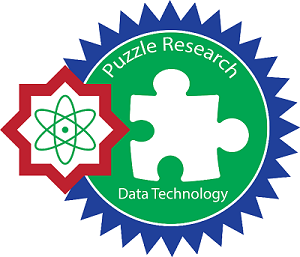ADDITIONAL MENU
Leveraging Machine Learning for Accurate Anemia Diagnosis Using Complete Blood Count Data
Abstract
Anemia, a prevalent hematologic disorder, necessitates accurate and timely diagnosis for effective management and treatment. This study explores the application of various machine learning models to classify anemia types using complete blood count (CBC) data. We evaluated multiple models, including DecisionTreeClassifier, ExtraTreeClassifier, RandomForestClassifier, ExtraTreesClassifier, XGBoost, LightGBM, and CatBoost, to identify the most effective approach for anemia diagnosis. The dataset comprised CBC data labeled with anemia diagnoses, sourced from multiple medical facilities. Rigorous data preprocessing was performed, followed by feature selection using methods such as Variance Inflation Factor (VIF), Predictive Power Score (PPS), and feature importance from ensemble models. The models were trained and evaluated using 5-fold cross-validation, with hyperparameter tuning conducted via GridSearchCV. Results demonstrated that the DecisionTreeClassifier achieved the highest balanced accuracy score of 94.17%, outperforming more complex ensemble methods. Confusion matrices validated its robust performance, highlighting its precision and recall. The study underscores the potential of simple decision tree models in medical diagnosis tasks, particularly when datasets are well-preprocessed. These findings have significant implications for clinical practice, suggesting that machine learning can enhance diagnostic accuracy and efficiency. Future work will explore advanced techniques to further improve performance and integration into clinical workflows.
Keywords
Anemia Diagnosis;Machine Learning;Complete Blood Count (CBC);Decision Tree;Medical Data Analysis
Full Text:
PDFReferences
M. A. Warner and A. C. Weyand, “The Global Burden of Anemia,” in Blood Substitutes and Oxygen Biotherapeutics, Springer, 2022, pp. 53–59.
V. Mattiello, M. Schmugge, H. Hengartner, N. von der Weid, R. Renella, and S. P. H. W. Group, “Diagnosis and management of iron deficiency in children with or without anemia: consensus recommendations of the SPOG Pediatric Hematology Working Group,” Eur. J. Pediatr., vol. 179, pp. 527–545, 2020.
D. Kinyoki, A. E. Osgood-Zimmerman, N. V Bhattacharjee, N. J. Kassebaum, and S. I. Hay, “Anemia prevalence in women of reproductive age in low-and middle-income countries between 2000 and 2018,” Nat. Med., vol. 27, no. 10, pp. 1761–1782, 2021.
R. P. B. Tonino, L. M. Zwaginga, M. R. Schipperus, and J. J. Zwaginga, “Hemoglobin modulation affects physiology and patient reported outcomes in anemic and non-anemic subjects: An umbrella review,” Front. Physiol., vol. 14, p. 1086839, 2023.
J. D. Cooper and J. M. Tersak, “Red Blood Cells,” Zitelli Davis’ Atlas Pediatr. Phys. Diagnosis, E-b. Zitelli Davis’ Atlas Pediatr. Phys. Diagnosis, E-b., vol. 16, no. 13.5, p. 424, 2021.
O. V Chinelo, E. Chukwuka, A. C. Ifeoma, and others, “Causes of anemia due to diminished red blood cell production in pediatrics,” Int. J. Sci. Adv., vol. 3, no. 5, pp. 711–718, 2022.
J. Cotter, C. Baldaia, M. Ferreira, G. Macedo, and I. Pedroto, “Diagnosis and treatment of iron-deficiency anemia in gastrointestinal bleeding: A systematic review,” World J. Gastroenterol., vol. 26, no. 45, p. 7242, 2020.
M. D. Cappellini, K. M. Musallam, and A. T. Taher, “Iron deficiency anaemia revisited,” J. Intern. Med., vol. 287, no. 2, pp. 153–170, 2020.
H. Tvedten, “Classification and laboratory evaluation of anemia,” Schalm’s Vet. Hematol., pp. 198–208, 2022.
S. Gajbhiye and J. Aate, “Blood Report Analysis-A Review,” Trop. J. Pharm. Life Sci., vol. 10, no. 5, pp. 63–79, 2023.
K. Delikoyun, E. Cine, M. Anil-Inevi, O. Sarigil, E. Ozcivici, and H. C. Tekin, “2 Deep learning-based cellular image analysis for intelligent medical diagnosis,” in Artificial Intelligence for Data-Driven Medical Diagnosis, De Gruyter, 2021, pp. 19–54.
S. A. Wulandari, H. Al Azies, M. Naufal, W. A. Prasetyanto, F. A. Zahra, and others, “Breaking Boundaries in Diagnosis: Non-Invasive Anemia Detection Empowered by AI,” IEEE Access, 2024.
M. Sarker, “Revolutionizing healthcare: the role of machine learning in the health sector,” J. Artif. Intell. Gen. Sci. ISSN 3006-4023, vol. 2, no. 1, pp. 36–61, 2024.
J. Peng, E. C. Jury, P. Dönnes, and C. Ciurtin, “Machine learning techniques for personalised medicine approaches in immune-mediated chronic inflammatory diseases: applications and challenges,” Front. Pharmacol., vol. 12, p. 720694, 2021.
S. Hosseinzadeh Kassani and others, “Towards secure and intelligent diagnosis: deep learning and blockchain technology for computer-aided diagnosis systems,” University of Saskatchewan, 2021.
A. Baldi and S.-R. Pasricha, “Anaemia: Worldwide Prevalence and Progress in Reduction,” in Nutritional Anemia, Springer, 2022, pp. 3–17.
M. A. Salam, M. Y. Al-Amin, J. S. Pawar, N. Akhter, and I. B. Lucy, “Conventional methods and future trends in antimicrobial susceptibility testing,” Saudi J. Biol. Sci., vol. 30, no. 3, p. 103582, 2023.
B. R. McFadden, T. J. J. Inglis, and M. Reynolds, “Machine learning pipeline for blood culture outcome prediction using Sysmex XN-2000 blood sample results in Western Australia,” BMC Infect. Dis., vol. 23, no. 1, p. 552, 2023.
J. Mateo, J. M. Rius-Peris, A. I. Maraña-Pérez, A. Valiente-Armero, and A. M. Torres, “Extreme gradient boosting machine learning method for predicting medical treatment in patients with acute bronchiolitis,” Biocybern. Biomed. Eng., vol. 41, no. 2, pp. 792–801, 2021.
S. Pullakhandam and S. McRoy, “Classification and Explanation of Iron Deficiency Anemia from Complete Blood Count Data Using Machine Learning,” BioMedInformatics, vol. 4, no. 1, pp. 661–672, 2024.
Y. Wu, L. Zhang, U. A. Bhatti, and M. Huang, “Interpretable machine learning for personalized medical recommendations: A LIME-based approach,” Diagnostics, vol. 13, no. 16, p. 2681, 2023.
P. Rajpurkar, E. Chen, O. Banerjee, and E. J. Topol, “AI in health and medicine,” Nat. Med., vol. 28, no. 1, pp. 31–38, 2022.
E. Aboelnaga, “Anemia Types Classification.” 2023.
DOI: http://dx.doi.org/10.24014/ijaidm.v7i2.29869
Refbacks
- There are currently no refbacks.
Office and Secretariat:
Big Data Research Centre
Puzzle Research Data Technology (Predatech)
Laboratory Building 1st Floor of Faculty of Science and Technology
UIN Sultan Syarif Kasim Riau
Jl. HR. Soebrantas KM. 18.5 No. 155 Pekanbaru Riau – 28293
Website: http://predatech.uin-suska.ac.id/ijaidm
Email: ijaidm@uin-suska.ac.id
e-Journal: http://ejournal.uin-suska.ac.id/index.php/ijaidm
Phone: 085275359942
Journal Indexing:
Google Scholar | ROAD | PKP Index | BASE | ESJI | General Impact Factor | Garuda | Moraref | One Search | Cite Factor | Crossref | WorldCat | Neliti | SINTA | Dimensions | ICI Index Copernicus
IJAIDM Stats










